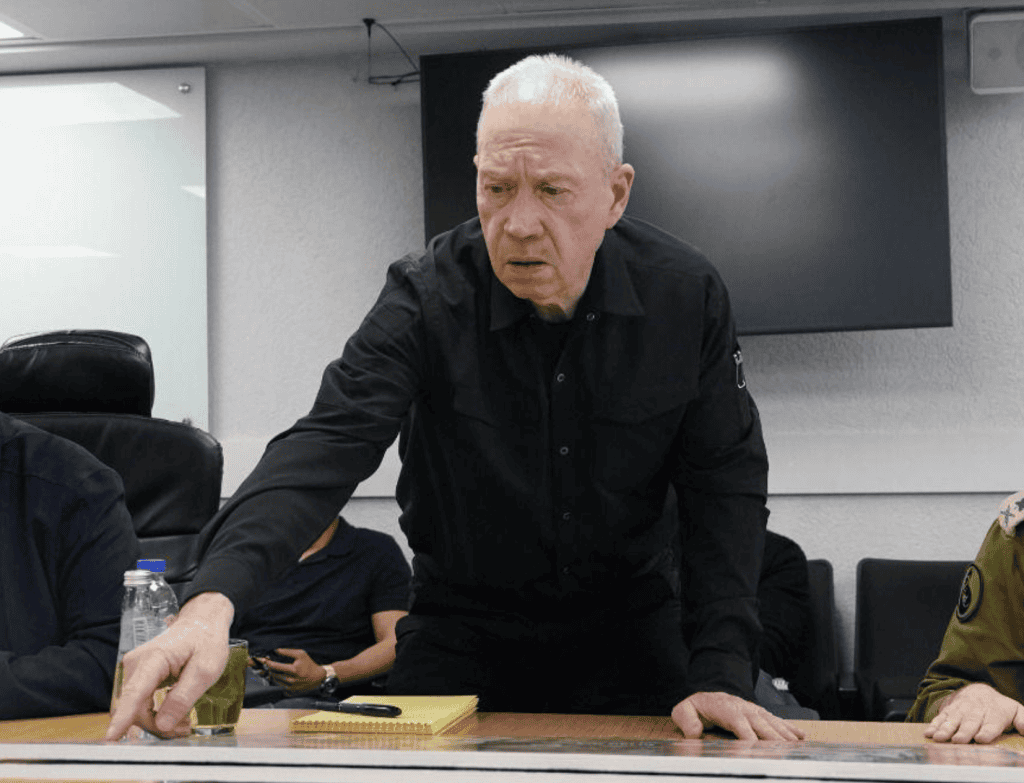
Israeli Defense Minister Yoav Gallant held a briefing on April 10 in which he sought to highlight Israel’s challenges in Gaza and also the next phase of the war. “Two weeks ago I instructed the defense establishment to immediately increase the influx of aid, especially in light of future operations,” he said. He noted that he consulted with the IDF and its Coordinator of Government Activities in the Territories (COGAT) office which has been tasked with dealing with aid flowing into Gaza. He has now presented a series of decisions to Israel’s cabinet.
Gallant has frequently pushed for more forward-thinking action in Gaza throughout the war. For instance he was the first official to come up with a “day after” plan, a plan that was then adopted in many respects by Prime Minister Benjamin Netanyahu. Gallant’s policies have not always turned out as predicted. For instance, he vowed that military pressure would result in more hostage deals, after the first deal on November 24, and the military pressure of December and January did not result in more deals. Instead the IDF withdrew from most of Gaza and now only has one brigade in Gaza.
In his briefing on April 10 the Defense Minister noted that “we are learning more and more over the last month because we have obtained hundreds of terabytes of information and pictures from Hamas.” He also noted that the Hamas attack on October 7 had sophistication that was at a “military organization” level. He notes that “we were attacked by an organized commando division. This is the military formation that we are fighting – not just terrorists.”
The goal of the IDF’s operations in Gaza have been to destroy Hamas as a military organization. This distinguishes from counter-terrorism, which is the policy the IDF used initially during the Second Intifada. The goal of the Gaza campaign, and the reason more IDF units have been withdrawn, is because Hamas “battalions” have mostly been defeated, meaning its “military” capabilities are degraded. This is the IDF assessment, at least. “Today Hamas is no longer functioning as a military organization across the strip – we have destroyed 4 out of 5 regional brigades. The remaining Brigade is in the south and across the strip we are fighting terror hotspots,” Gallant says.
It now appears Gallant wants to focus more on the humanitarian front in the next phase of the war. He says the policy in Gaza views “the humanitarian effort [as] a national priority.” He notes that the IDF has worked to prevent a humanitarian crisis in Gaza. This went through several phases of opening crossings to Gaza, after they were closed following the October 7 attack. A crossing called Nitzana was opened on October 21, days before the ground manuever began. Then on December 11, the Kerem Shalom crossing was opened, basically days into the second ground offensive into Khan Younis. By this time around 200 trucks were crossing into Gaza every day. Trucks usually arrive from Egypt and go through a complex process of being checked before entering Gaza.
Next came a phase involving dozens of airdrops over Gaza and also a humanitarian corridor via the sea which has involved two ships arriving from Cyprus. However, that corridor was compromised when an airstrike killed seven aid workers from the World Central Kitchen, causing the group to pause aid and causing the UAE to pause aid. The UAE has shifted gears now and has sent its first truck convoy to northern Gaza on April 9, a day before Ramadan ended.
Now aid will also come from Jordan via Israel and Gallant says this will help enable future “hubs” in Gaza. It is not clear if this is an extension of a previous concept about “bubbles” in Gaza where civil control would pass from Hamas to some other group. Israel has so far not been able to find a partner to administer Gaza, and when IDF troops leave, Hamas returns.
Gaza is now receiving 400 trucks of aid a day and it has seven field hospitals operating. What comes next? “There are three bad options for the day after: Hamas controlling Gaza, Israel controlling Gaza, and total anarchy. We need to create another option – to empower a local alternative. The humanitarian effort is key in empowering a local alternative,” Gallant said. He also praised the US-Israel relationship. “I believe that we share 100 percent of the values and 99 percent of the interests. I am proud of this.”







